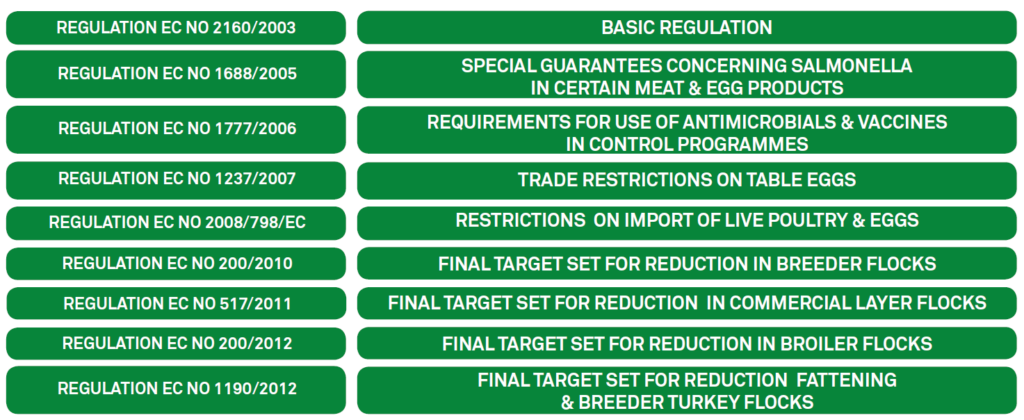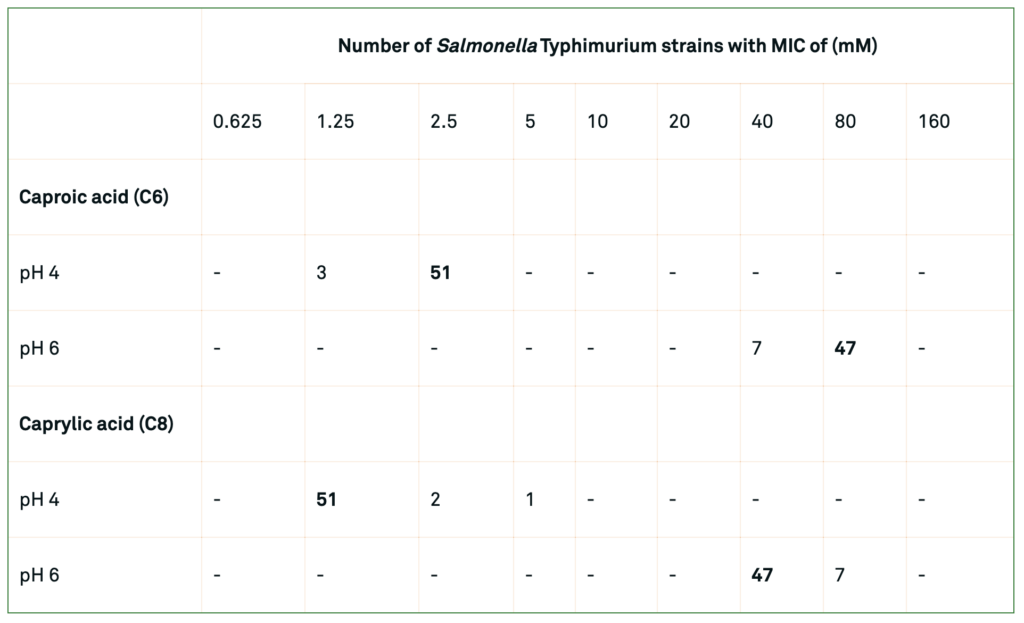Over the last 15 years a continuous reduction in the incidence of Salmonellosis in humans could be observed, supported by the implementation of several regulations at EU level (see Fig. 1) and national Salmonella control programmes. Since 2014, however, human Salmonellosis cases are on the rise again, as is evident from recent reports by the European Centre for Disease Prevention and Control (ECDC) and the European Food Safety Authority (EFSA). In the same period, a small increase in Salmonella prevalence has been observed in consumption eggs in EU. Although this will have certainly contributed, it is today not completely clear what the main reasons are for the increased human Salmonellosis cases in EU. Are people becoming less conscious about the risk and neglect basic hygienic rules, has the animal become more susceptible to Salmonella colonization or is Salmonella itself better adapted to, and therefore more frequent present in the environment, or are changes in the poultry production process responsible?

In order to control Salmonella contamination in poultry and eggs it is important not only to work on preventive measurements aimed at reducing the incidence of Salmonella having contact with birds but also, once contact took place, to immediately reduce the risk of intestinal colonization and systemic spreading to internal organs.
Salbiotic is a functional feed ingredient combining ‘activated’ medium-chain fatty acids (MCFA) with lactic acid to achieve maximum functionality against colonization, growth and invasion of Salmonella in the small intestine, by providing an early antibacterial barrier in the stomach. MCFA are very effective at inhibiting the growth of Salmonella (by damaging the bacterial cell wall, acidifying its content and blocking DNA duplication) because of their low minimal inhibitory concentration (MIC), which is more expressed at lower pH (see Fig. 2). Due to its low pKa value and its permeabilizing effect on the bacterial cell wall, lactic acid works synergistically with MCFA against Salmonella by reducing the pH in the upper gastro-intestinal tract and making the bacterial cell wall better penetrable for the MCFA.

At concentrations in the feed below the MIC, MCFA reduce the virulence of Salmonella by downregulating hilA, a crucial gene for Salmonella to invade epithelial cells and thus persistently colonize the small intestine.
For an effective nutritional strategy against Salmonella it is of utmost importance that the dietary approach does not intervene with other control measures, such as vaccination. In a recent study performed by Agrimprove, it was shown that in-feed MCFA at the advised dosage do not negatively affect vaccination efficiency of chickens with live Salmonella bacteria. In this study, control fed and MCFA-supplemented breeder hens were vaccinated at one day of age by oral inoculation of Avipro®Salmonella Duo, a bivalent vaccine containing attenuated live S. Enteritidis and S. Typhimurium bacteria. Efficacy of vaccination was evaluated by determining the number of Salmonella bacteria in the caeca after vaccination at 6 and 13 days of age. At none of the sampling points a difference could be observed in neither S. Enteritidis nor S. Typhimurium counts in the caeca of birds of both groups.
To conclude, Salbiotic is highly effective at reducing Salmonella colonization and spreading in chickens. It acts precise, causes no collateral damage, is safe to use and is perfectly compatible with other control measures: a unique element for any integrated anti-Salmonella approach!
